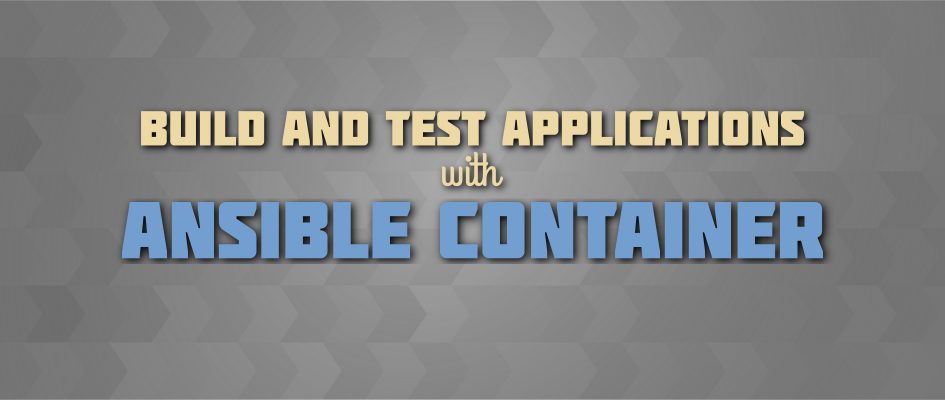
容器是一个日益流行的开发环境。作为一名开发人员,你可以选择多种工具来管理你的容器。本文将向你介绍 Ansible Container,并展示如何在类似生产环境中运行和测试你的应用程序。
入门
这个例子使用了一个简单的 Flask Hello World 程序。这个程序就像在生产环境中一样由 Apache HTTP 服务器提供服务。首先,安装必要的 docker 包:
sudo dnf install docker
Ansible Container 需要通过本地套接字与 Docker 服务进行通信。以下命令将更改套接字所有者,并将你添加到可访问此套接字的 docker 用户组:
sudo groupadd docker && sudo gpasswd -a $USER docker
MYGRP=$(id -g) ; newgrp docker ; newgrp $MYGRP
运行 id 命令以确保 docker 组在你的组成员中列出。最后,使用 sudo 启用并启动 docker 服务:
sudo systemctl enable docker.service
sudo systemctl start docker.service
设置 Ansible Container
Ansible Container 使你能够构建容器镜像并使用 Ansible playbook 进行编排。该程序在一个 YAML 文件中描述,而不是使用 Dockerfile,列出组成容器镜像的 Ansible 角色。
不幸的是,Ansible Container 在 Fedora 中没有 RPM 包可用。要安装它,请使用 python3 虚拟环境模块。
mkdir ansible-container-flask-example
cd ansible-container-flask-example
python3 -m venv .venv
source .venv/bin/activate
pip install ansible-container[docker]
这些命令将安装 Ansible Container 及 Docker 引擎。 Ansible Container 提供三种引擎:Docker、Kubernetes 和 Openshift。
设置项目
现在已经安装了 Ansible Container,接着设置这个项目。Ansible Container 提供了一个简单的命令来创建启动所需的所有文件:
ansible-container init
来看看这个命令在当前目录中创建的文件:
ansible.cfgansible-requirements.txtcontainer.ymlmeta.ymlrequirements.yml
该项目仅使用 container.yml 来描述程序服务。有关其他文件的更多信息,请查看 Ansible Container 的入门文档。
定义容器
如下更新 container.yml:
version: "2"
settings:
conductor:
# The Conductor container does the heavy lifting, and provides a portable
# Python runtime for building your target containers. It should be derived
# from the same distribution as you're building your target containers with.
base: fedora:26
# roles_path: # Specify a local path containing Ansible roles
# volumes: # Provide a list of volumes to mount
# environment: # List or mapping of environment variables
# Set the name of the project. Defaults to basename of the project directory.
# For built services, concatenated with service name to form the built image name.
project_name: flask-helloworld
services:
# Add your containers here, specifying the base image you want to build from.
# To use this example, uncomment it and delete the curly braces after services key.
# You may need to run `docker pull ubuntu:trusty` for this to work.
web:
from: "fedora:26"
roles:
- base
ports:
- "5000:80"
command: ["/usr/bin/dumb-init", "httpd", "-DFOREGROUND"]
volumes:
- $PWD/flask-helloworld:/flaskapp:Z
conductor 部分更新了基本设置以使用 Fedora 26 容器基础镜像。
services 部分添加了 web 服务。这个服务使用 Fedora 26,后面有一个名为 base 的角色。它还设置容器和主机之间的端口映射。Apache HTTP 服务器为容器的端口 80 上的 Flask 程序提供服务,该容器重定向到主机的端口 5000。然后这个文件定义了一个卷,它将 Flask 程序源代码挂载到容器中的 /flaskapp 中。
最后,容器启动时运行 command 配置。这个例子中使用 dumb-init,一个简单的进程管理器并初始化系统启动 Apache HTTP 服务器。
Ansible 角色
现在已经设置完了容器,创建一个 Ansible 角色来安装并配置 Flask 程序所需的依赖关系。首先,创建 base 角色。
mkdir -p roles/base/tasks
touch roles/base/tasks/main.yml
现在编辑 main.yml ,它看起来像这样:
via: <https://fedoramagazine.org/build-test-applications-ansible-container/>
作者:[Clement Verna](https://fedoramagazine.org/author/cverna/) 译者:[geekpi](https://github.com/geekpi) 校对:[wxy](https://github.com/wxy)
本文由 [LCTT](https://github.com/LCTT/TranslateProject) 原创编译,[Linux中国](https://linux.cn/) 荣誉推出

发表回复